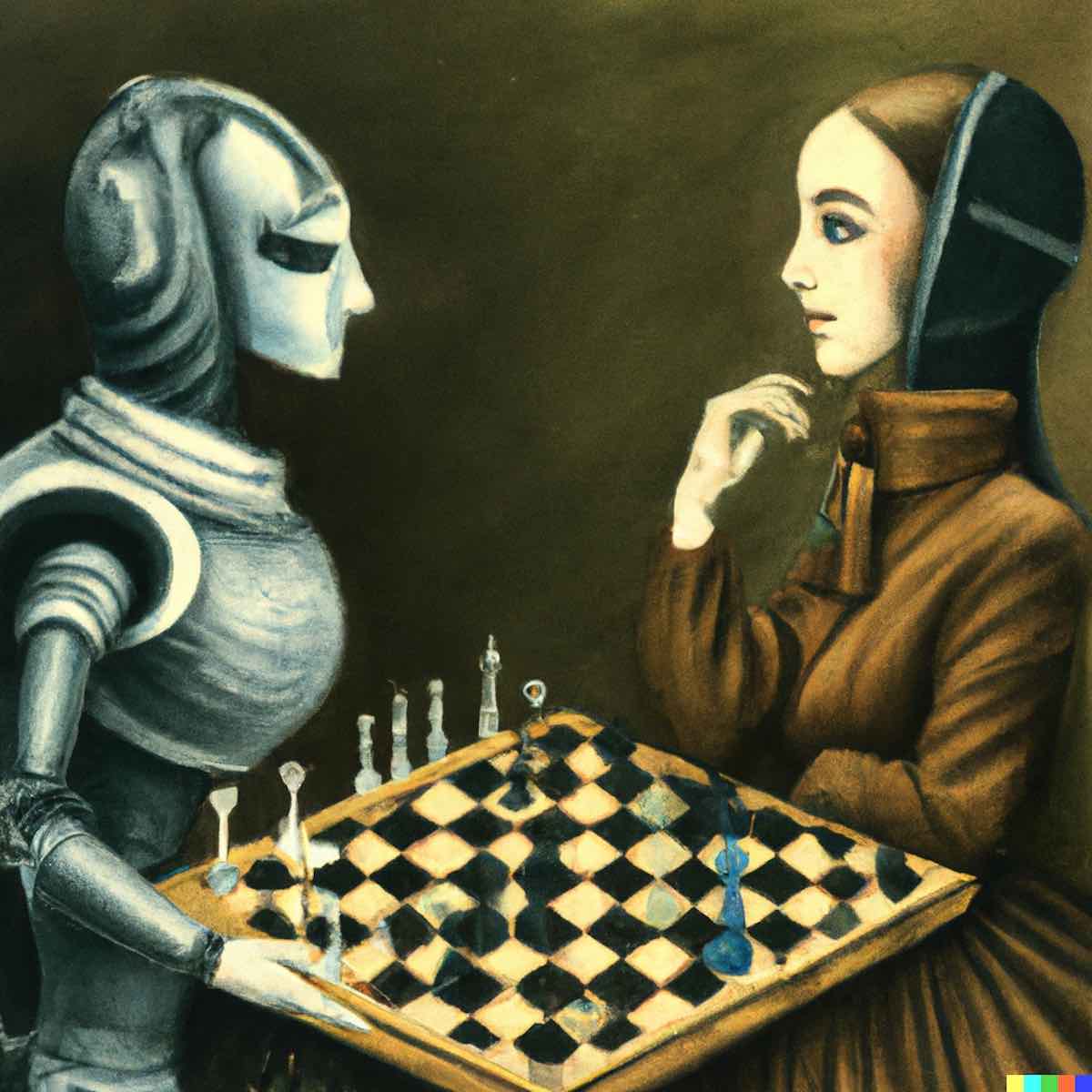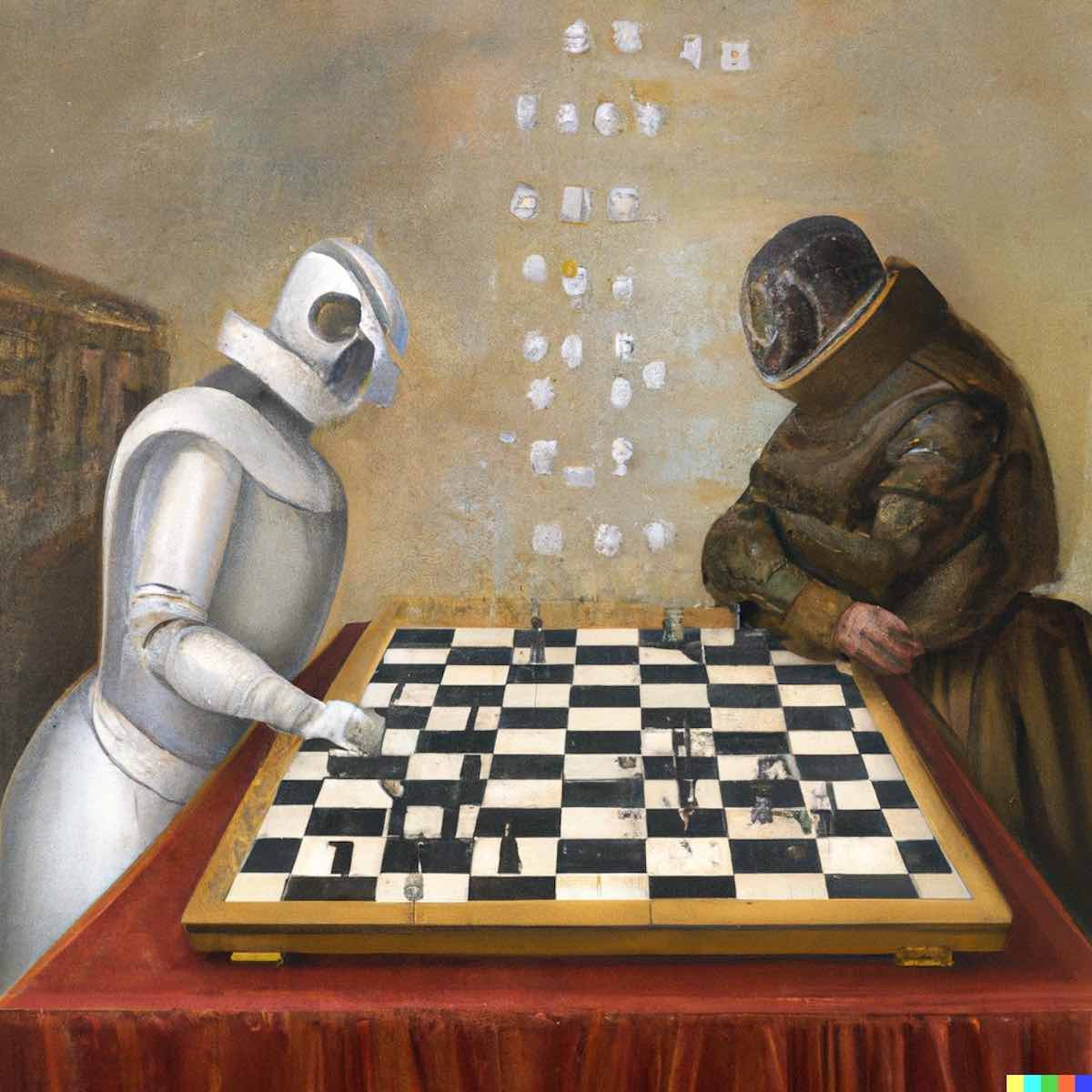- Published
How much does artificial intelligence owe to biology?

"Artificial intelligence droid vs human playing chess" by Rembrant (DALL-E)
- Evolution
- Biological neural network
- Artificial neural network
- AI algorithms: responsible, unbiased, explainable
Why invent a new computational paradigm for solving tasks, if nature gives us one exhaustively tested for hundreds of thousands of years?
Evolution
After 1.5 million years of evolution, give or take a year, the human brain is capable of learning abstract concepts, using sophisticated linguistic systems, interpreting symbolic representations, creating art, making moral and ethical decisions, etc. Don't let the ordinary stop you from appreciating the extraordinary: we are given a brain at birth, without any merit, which is the pinnacle of sophistication! In the context of the animal kingdom to which we belong, it is about superpowers.
Biological neural network
Brain activity relies on the interconnection of highly specialized cells known as neurons, which self-organize into neural networks. Communication between two neurons is established through synapses, a link that allows the transmission of electrochemical signals (information) that determine our response to environmental stimuli (decision making). As part of learning, groups of neurons begin to collaborate forming neural circuits (teamwork) that achieve high levels of specialization in solving specific tasks. The response of each neuron depends on the combined effect (the sum) of excitatory and inhibitory signals that it receives simultaneously through multiple inputs (synapses), determining if the neuron reaches a threshold voltage to trigger an action potential. These action potentials play a key role in the propagation of signals through neural circuits. In short, neurons are essentially simple units that receive, process, and transmit information, and that self-organize into complex structures to collaboratively solve specific tasks.
Why invent a new computational paradigm for solving tasks, if nature gives us one exhaustively tested for hundreds of thousands of years?
Artificial neural network
As the reader will have already guessed, biological neural networks have inspired mathematical models, known as artificial neural networks, that take advantage of the principles explained: interconnected units that combine their inputs to produce outputs that, in turn, become inputs of other units, and that collaborate in the solution of specific complex tasks. For example, the bone age estimation methods proposed in this application are artificial neural networks.
As in the case of biological neurons, these units (also called neurons for obvious reasons) perform basic operations on their inputs that consist mainly of multiplication and addition. Our artificial neurons are organized in layers that are connected sequentially and transform and transmit information from primary representations close to our understanding of reality, to abstract representations (patterns) that are more useful for making decisions. What allows the same configuration of layers and units to solve very different tasks is a set of parameters (numbers), one for each connection between two units, that weight (attenuate or amplify) the information that is transmitted through that connection. These parameters are learned or adjusted through training processes such as the one described in our previous post.
AI algorithms: responsible, unbiased, explainable
Although these are mathematical models inspired by infinitely more complex biological structures, in practice these models are already capable of learning abstract concepts, using sophisticated linguistic systems, interpreting symbolic representations, creating art, etc. Yes, these systems can already replace humans in decision-making in multiple areas of society, although in others they are still far from the quality of decisions that a human expert in the target task could adopt.

"Artificial intelligence droid vs human playing chess" by Rembrant (DALL-E)
However, when decisions have a direct impact on the lives of specific people, things change. For example, a medical diagnosis system should support the work of health personnel, facilitating the identification of clinical evidence and suggesting diagnostic hypotheses (expanding knowledge or intelligence), but never substituting the final reasoned decision made by a doctor who consider the patient as a whole. And about making moral and ethical decisions, it is a very active area of debate and reflection. Whatever the field of application, AI algorithms should make responsible and unbiased decisions that can be explained. It will be a good topic for another note.